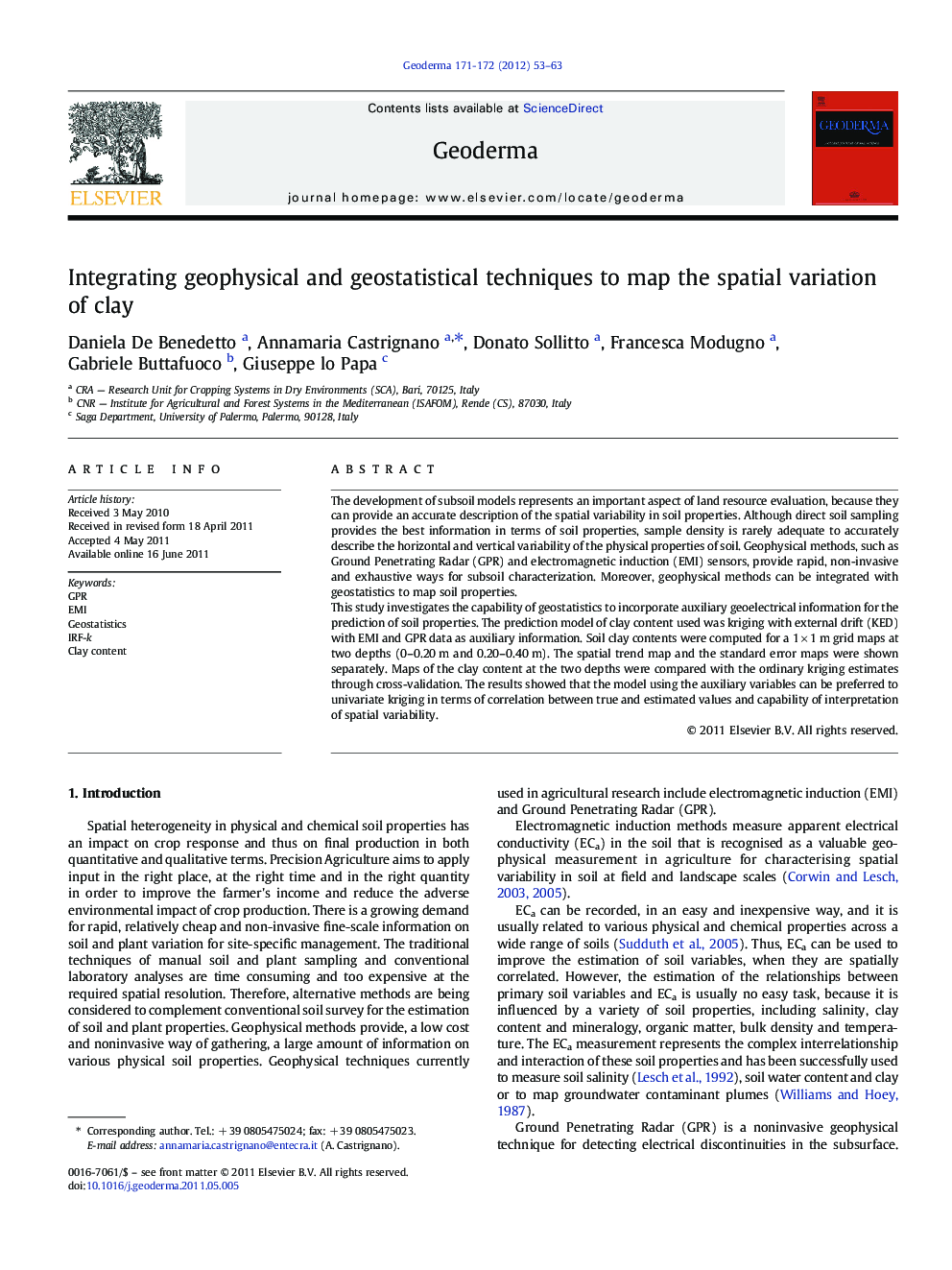| Article ID | Journal | Published Year | Pages | File Type |
|---|---|---|---|---|
| 4573987 | Geoderma | 2012 | 11 Pages |
The development of subsoil models represents an important aspect of land resource evaluation, because they can provide an accurate description of the spatial variability in soil properties. Although direct soil sampling provides the best information in terms of soil properties, sample density is rarely adequate to accurately describe the horizontal and vertical variability of the physical properties of soil. Geophysical methods, such as Ground Penetrating Radar (GPR) and electromagnetic induction (EMI) sensors, provide rapid, non-invasive and exhaustive ways for subsoil characterization. Moreover, geophysical methods can be integrated with geostatistics to map soil properties.This study investigates the capability of geostatistics to incorporate auxiliary geoelectrical information for the prediction of soil properties. The prediction model of clay content used was kriging with external drift (KED) with EMI and GPR data as auxiliary information. Soil clay contents were computed for a 1 × 1 m grid maps at two depths (0–0.20 m and 0.20–0.40 m). The spatial trend map and the standard error maps were shown separately. Maps of the clay content at the two depths were compared with the ordinary kriging estimates through cross-validation. The results showed that the model using the auxiliary variables can be preferred to univariate kriging in terms of correlation between true and estimated values and capability of interpretation of spatial variability.
Research Highlights► The study investigated the capability of geostatistics to incorporate auxiliary geoelectrical information for the prediction of soil properties. ► The results of this work showed that using the auxiliary variables can be preferred to univariate kriging. ► We used GPR and EMI sensors in combination with geostatistical technique to map soil clay content. ► The study showed the utility to supplement direct sampling with auxiliary geophysical variables. ► Kriging with external drift (KED) was used to estimate clay content with EMI and GPR data as auxiliary information.
